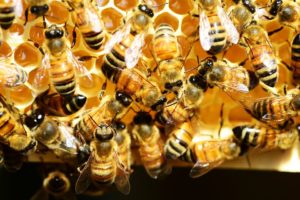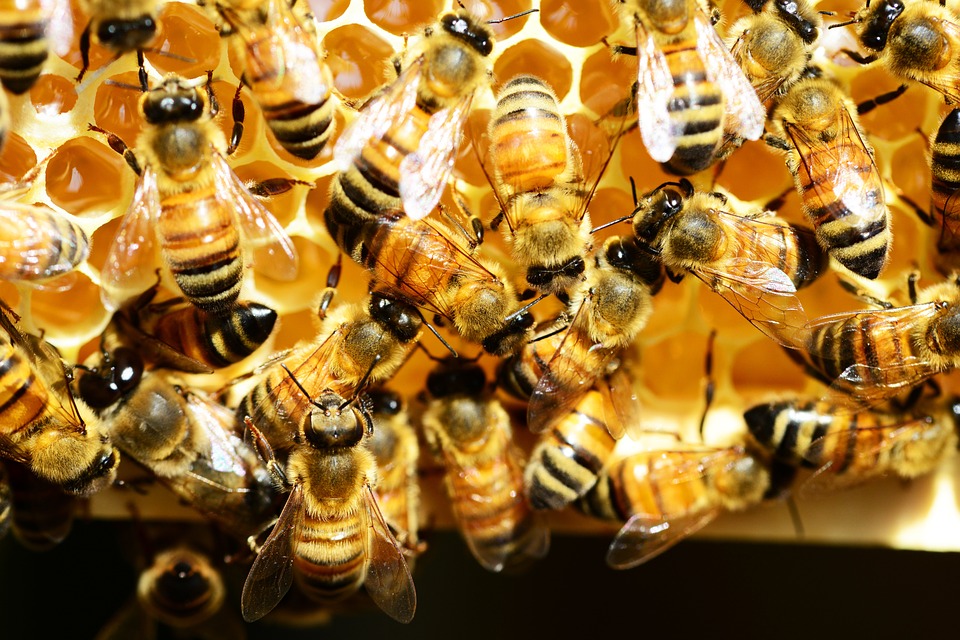 Though the sun may not have gotten the message yet, spring has officially sprung. Trees are budding, daffodils blooming, and bees buzzing – just in time for you to try your hand at the ancient practice of beekeeping.
Though the sun may not have gotten the message yet, spring has officially sprung. Trees are budding, daffodils blooming, and bees buzzing – just in time for you to try your hand at the ancient practice of beekeeping.
Hello, My Name Is Honeybee
First, the facts: 70% of our food supply depends on pollinators like honeybees. Their importance here cannot be understated – and that’s before we even factor in the delicious honey they make.
During the winter, bees are dormant and huddle together in clusters to stay warm until the spring. Around the beginning of April, honeybees break their clusters to begin their natural growth phase and reproduce. Bees organize themselves into colonies, with one queen at the center of each, and seek out a hive for the foraging season.
Now, as you may have heard, honeybees are in a lot of trouble. Because of the nature of their foraging pattern, they are particularly susceptible to the dangers of pesticides. Bees bring pesticide-laden pollen back to the hive for long-term storage, resulting in far-reaching consequences for the colony. Beekeeping can be helpful, by producing healthy colonies that strengthen the gene pool.
Lucky for us, Corvallis is full of resources for both beginner and seasoned beekeepers. Jen Larson, the resident beekeeping guru at Shonnard’s Nursery, recently hosted a short class on how to get started in beekeeping. I’m here to relay the message to our ever-faithful Advocate readers.
Got Bees?
Larson was quick to instill the primary wisdom of beekeeping: it takes a hearty dose of education and responsibility. There are no beekeeping laws in Oregon, so being a good neighbor is the law of the land. As far as education goes, look to the beekeepers at Shonnard’s, the OSU Honey Bee Lab, and the Linn-Benton Beekeepers Association.
Acquiring the real stars of this show can happen in several different ways. You can order anything in a package these days, including honeybees. A bee package comes with a colony of worker bees, and a separate container housing a queen. However, in a bee package, the queen has not yet been established within the colony, so special care is necessary to give the colony time to adjust to and accept their new queen. Bee packages cost about $140; you can order one at Shonnard’s.
You can also order a nucleus hive, which is a small colony with an established queen. Nucleus hives take a little less maintenance during set-up, but are more expensive, at about $180 a pop.
The free option for acquiring bees is a bit more complicated. Since bees swarm naturally, it is technically possible to catch a swarm and give it a home. Aside from the obvious risk of getting stung or falling off a ladder trying to catch bees, you must capture the queen with the rest of the bees. Otherwise, the colony won’t stick around long enough for their “welcome to the neighborhood” muffins. This method is not recommended for beginner beekeepers.
The Hive
Once you have your bees ordered, the next step is choosing a hive. For the class, Larson discussed only Langstroth hives, the most popular option. Langstroth hives are composed of stackable boxes with removable frames and are specifically designed to respect “bee space” – the perfect amount of space for one bee to climb over another, but not so much space that the bees produce burr combs, irregular combs that join parts of the hive.
Within a hive, there are two sets of boxes meant for different purposes: the brood boxes and the honey boxes. Brood boxes are where all reproduction takes place. Honey boxes are for storing surplus nectar and honey. If you use a metal grate called a queen excluder, these boxes will remain distinct and you won’t find larvae in your honey supply.
Within each box are removable frames, each with their own comb foundation. There are several options for foundations, but the main idea here is to reuse the honeycomb. Bees allocate nectar into making either wax or honey. If bees don’t need to use nectar to rebuild the honeycomb, they can produce more of the sweet stuff.
Larson also recommends placing a screened bottom board under the hive to prevent moisture buildup during these lovely wet Pacific Northwest winters. These screens also allow you to check for mites or crumbled pieces of wax, indicating hatched eggs.
Hive Inspections
Larson suggests starting with two hives, if you have the space and can afford it. This way, you have the option of comparing the health of the two hives. Regular hive inspections are a necessary part of responsible beekeeping. Hive inspections should monitor the health of the brood and queen, check honey and pollen storage, and screen for pests and diseases.
Hive inspections require additional tools and protective clothing, which shouldn’t be skimped on. At the very minimum, Larson says a beginner beekeeper should have a hat and veil for personal protection, a bee smoker for calming the little buggers, and a multi-purpose hive tool.
Honey Extraction
Once you have a happy and healthy beehive, you should be ready to harvest honey! Honey extraction tools are expensive, but Shonnard’s and the Linn-Benton Beekeepers Association both have equipment available to use or rent until you’re ready to purchase your own.
For more information or to attend a beekeeping class, visit Shonnard’s in person at 6600 SW Philomath Boulevard or online at www.shonnards.com/beekeeping, or email [email protected].
By Keely Corder
